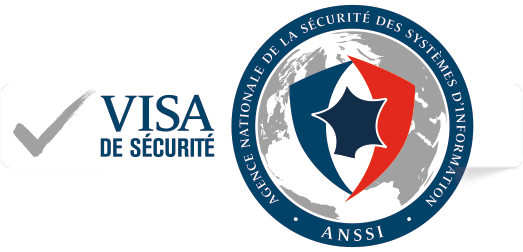IAM
Digital identity: a matter of trust!

The notion of identity is central to the use of IT systems, whether in a professional context (employee, service provider, partner, subcontractor, etc.) or a “general public” context (citizen, customer, simple prospect, etc.).
The issues behind Digital Identity always converge on the question of trust. The aim is to ensure that the end user (individual, system, robot, etc.) can carry out the desired actions in the simplest possible way and with the expected level of safety.
The field of Digital Identity (or IAM for Identity and Access Management) is vast, and can be broken down into different sub-areas of expertise – depending on the type of user concerned or the issue at hand:
Our areas of expertise.

– This involves managing the identity, accounts and rights of users accessing the company’s Information System: from granting the first access to remediating rights on departure;
– This management must guarantee traceability and auditability of rights at all times, in order to guarantee the security of access to the Information System and compliance with the various standards and regulations in force.
– SSO – Single Sign-On or unique authentication – brings the promise of simplified, secure access to the Information System (legacy applications or Cloud applications) and control over the services on offer (APIs, mobile applications, websites, etc.);
– Adaptive authentication andmulti-factor authentication (MFA) enhance the level of security offered to the user, while ensuring appropriate ergonomics.
– Within the company, administrators are a special group, with extensive access to the information system that needs to be secured and controlled, while minimizing the impact on day-to-day operations;
– On the same principle, remote accesses by third parties (outsourcer, integrator, etc.) must also be controlled, as they open a door onto the Information System.
– The issues are different when it comes to managing a citizen’s access to public services, or a customer’s – or prospect’s – access to a website;
– The user must be fully autonomous and the experience as seamless as possible, within a framework that respects regulations – but at the same time enables the organization to collect information.
There are very strong interactions between these different areas of Digital Identity, and it is common to combine several of them to meet a particular need.
The implementation of projects in the field of Digital Identity cannot be seen as a one-off action at a given moment, but is part of a trajectory that needs to be defined and supported over time:
Our fields of activity.

– With real feedback on solutions and projects, as well as an agnostic positioning, Synetis has a dedicated team to support its customers in framing their needs and choosing the right solution;
–Assistance with integration projects, whether in terms of project management (functional design, acceptance, data quality, deployment support, etc.), piloting or change management, is also at the heart of our experts’ activities.
– Standard training courses are offered by Synetis’ Qualiopi accredited training center, to help youunderstand the challenges of digital identity, its functional and technical aspects, and how to get to grips with the various solutions;
– Ad-hoc, tailor-made training courses are also available on request.
– Deploying a new solution, migrating an existing service or taking over an already operational base are all projects with their own specificities, requiring specific know-how and expertise;
– Project management, change management anddeployment support are also key to the success of this type of project, and should not be underestimated.
– Once the service has been opened up to users, the Maintenance in Operational Condition (MOC) phase, as well as support and assistance activities, are essential to maintain the desired level of service and meet expectations;
– Theiterative aspect of digital identity projects should be taken into account, enabling thescope to beextended as the project progresses – for example, by setting up a service center or TMA contract.
Dedicated offensive training.
Synetis can provide training for your staff on a wide range of subjects linked to the major theme of cybersecurity, backed up by R&D and feedback from our consultants.
Offensive training courses vary in length. Most take place over one day, but some can extend to 3 or 5 days, enabling Synetis consultants to tackle each theme in full, and provide participants with all the keys they need to understand and assimilate the training.
In terms of cybersecurity training, the Digital Identity catalog includes :
Click here
click here
the complete training link





